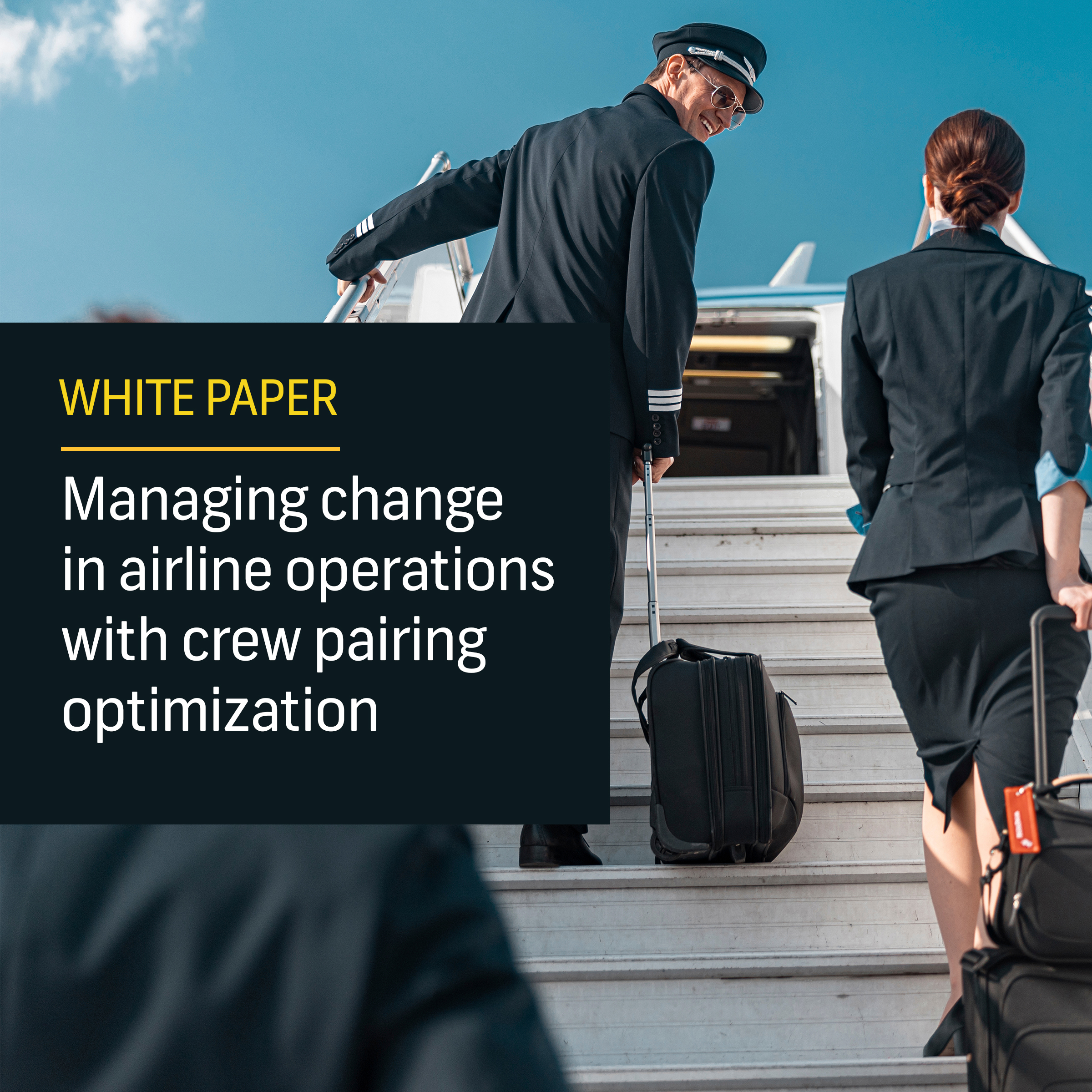Optimizing crew pairing
and rostering
In today´s context of staff shortages and operational pressures, optimizing resource utilization has never been so critical for airlines. Optimization enables airlines to deploy their crews and assets at fullest potential. And what “fullest potential” means, differs by airline depending on the objectives they set out to achieve. After all, optimizers reverse engineer the most effective solution to reach “desired outcomes”, so it´s important to know what those are from the outset.
“Desired outcomes” vary depending on whether the objective is to maximize productivity or minimize cost, for example. And when devising optimal pairing and rostering plans, many variables play into the equation, such as crew qualifications, scheduled training, availability, aircraft assignment, flight volumes, etc.
Optimized crew standby planning is an important contributor to robust, reliable and cost-efficient airline operations. Yet industry figures reveal that airlines only utilize up to 50% of their standby crew allocation. In this infographic, our experts outline how airlines can drive more accuracy in their crew standby planning forecasts to boost utilization to 85%.
With so many variables and scenarios in the mix, optimizing crew plans is complex and data intensive. But there´s one thing that´s clear - the world´s best performing airlines use optimizers for operational and strategic planning purposes, across different scenarios and time horizons. Ultimately, data-driven decisions address airline business needs and optimize efficiency and costs while adhering to strict industry regulations.
Discover the value of crew pairing and rostering optimizers in these additional assets






